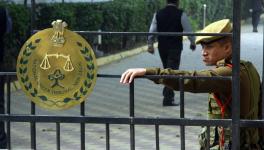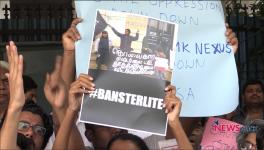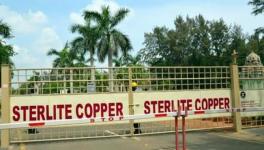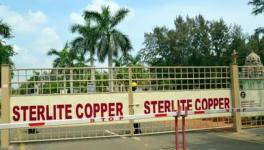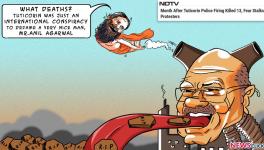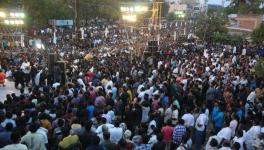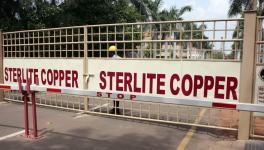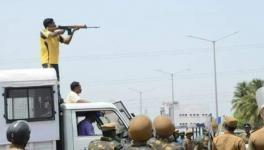What Actually Happened in Thoothukudi
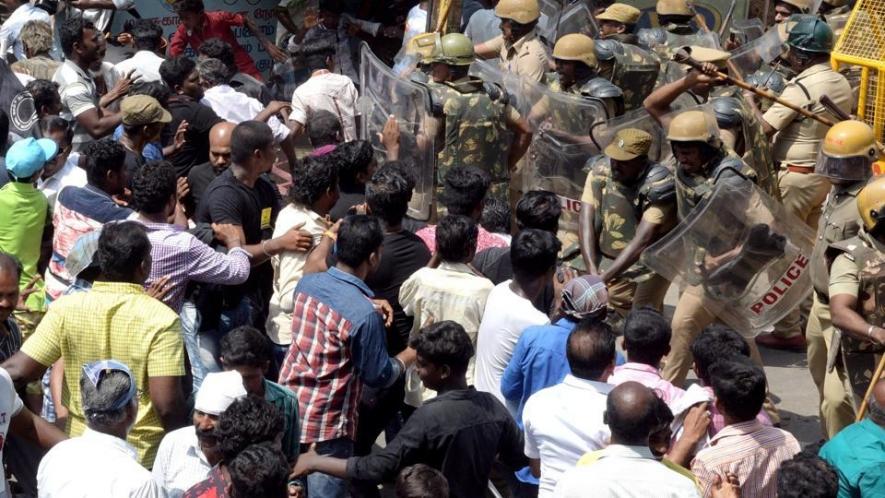
Thoothukudi, called Tuticorin in colonial times, is a small but important port-city and industrial centre in southern Tamil Nadu.
In 1994, Sterlite received a no-objection certificate from the Tamil Nadu Pollution Control Board to set up a copper smelting plant in Thoothukudi, on the condition that it would be located 25 kilometres inland from the Gulf of Mannar.
This was reinforced by the Ministry of Environment and Forests in 1995. Both permissions came after the people of Ratnagiri successfully aborted their attempt to set up a plant in the Konkan, requiring the project to relocate. The plant was set up in violation of that condition, 14 kms from the coast.
Since the setting up of the plant, complaints of air and water pollution causing illness to residents and workers have come in regularly. The plant is shut down from time to time and reopened shortly thereafter. In 2013, a Supreme Court judgment agreed with the petition that the Sterlite plant had caused pollution but let the company off with a fine.
News that Sterlite planned to expand the plant prompted a hundred days of protest, set to culminate in a peaceful rally on May 22. This was only the most recent phase of protests against the plant which have been ongoing for years and led mainly by the fisher community leaders. In this phase, they gained ground. In the words of the People’s Inquest:
“The PI team notes that the present campaign was a grassroots one and arguably the first of its kind in post-independence India on the issue of corporate control and environmental safety. Four aspects were striking about the mobilisation.
One, that public enthusiasm for resistance to the growing presence of Sterlite never waned during this period that spanned a little over three months, in fact it only grew.
Two, it emerged as a broad coalition of people from varying backgrounds that included different religions, castes, classes and location. Interestingly, many otherwise marginalized groups like dalits and transgenders came to play important leadership roles in these protests.
Three, it was completely peaceful. Everybody resolved to go ahead and drive Sterlite out, but in a totally non-violent way.
Four, it was the women – often women with young children – who took the lead in several pockets and occasionally led the charge fearlessly, confronting policemen and public functionaries. They saw this as having a crucial bearing on their health, livelihoods and the future of their children.”
This is remarkably similar to another Tamil Nadu protest site, Koodankulam—long-time protests, underpinned by a coalition of citizen voices and asking questions about development decisions, only to be met with the brute force of the state.
***
So what happened on May 22?
In anticipation of the May 22 rally, the district administration called a meeting of some of the NGOs in the protest but overlooking some of the main organisers. The meeting was led by the police, and the Collector was away.
The People’s Inquest jury raises questions about the submission of the civilian administration to the police. The accent was on ‘managing’ the protest without understanding their scale, rather than acknowledging and enabling them with security. Moreover, this shows that they understood this as a law and order, rather than an accountability and democracy, issue.
Section 144 was imposed but the public was not informed efficiently or effectively and on the day its implementation was so hurried and haphazard as to be a ‘strategic blunder.’ So much so, the DM’s order had still not been made public at the time the report was written.
“The PI team further observes that, if the District Administration was serious about imposing Section 144, it would have prevented even small groups from forming in the entire city of Thoothukudi. Waiting for a crowd to gather before thinking of dispersing it was a gross error on the part of the District Administration and led to an avoidable loss of lives.” The People’s Inquest Report states that all evidence points to the planning of a peaceful protest, for instance, women and children came, carrying bedding with them .
“The PI team categorically observes from testimonies both from villages and the town that in the march towards the Collectorate, there were limited, mild lathi-charges, no permanent barricades. While there was limited use of tear gas, there was no use of water cannons at all anywhere in the city on that day. There were also no testimonies of public announcements or bugle calls asking protestors to either disperse, not to proceed to the Collectorate, or instead to move to “the assigned protest area” by the District Administration.”
The Report tells us that people were allowed to gather, with little deterrent and no barricades, while eye-witness account suggest that plainclothes police joined them as stone-pelters and sharp-shooters waited for them. Something about this is reminiscent of Jalianwala Bagh. Outside of the protest sites too there was killing.
Jhansi, living in Therespuram, had been active in the protests but did not join on May 22 for personal reasons. She visited her daughter but did not return. Her body was found in the mortuary by her relatives, who narrated to the Inquest:
“She had been shot in the head and face – her entire face had collapsed and we could only identify her through her necklace and bangles. Only one person was allowed to see her body…The body was not given to us. We were told it will be given on May 30… Finally, they conducted the post mortem, but the report falsely stated that Jhansi was ‘stoned to death’ when she was actually shot by the police.”
The postscript to May 22 compounds the impression of an administration not merely clueless and callous, but whose intentions are made suspect by its actions on the ground. Why were the police deployed in plainclothes? Why were sharpshooters positioned strategically?
“As visible display of uniformed authority is crucial to crowd control, plainclothed policemen should not normally be employed to use force; only uniformed personnel must be deployed for use of force; otherwise it would be very difficult to distinguish policemen from miscreants. The PI team believes it is vital that there be an investigation into the placement of police sharpshooters or snipers at vantage points. The duty of the police during rallies is to disperse a violent mob with minimum and proportionate force. It has no authority to provoke panic or deliberately target certain people on a shoot to kill basis. The actions of snipers must be investigated to ensure that their actions were not indiscriminate, disproportionate or deliberately precipitate but necessary to disperse the rallyists and protect their person or property. They cannot go unquestioned.”
The Report finds that there is fear about reprisals against activists in the Thoothukudi area. The Report examined 240 FIRs filed on May 22 and thereafter; “in most of the cases there is no name of the accused while in others there are un-named accused, comprising of 400 to 1000 or 2000, or 5000 and in one case even 7000 persons.”
The People’s Inquest team, which includes ___ human rights lawyers, points out that when an FIR lists 400-7000 unknown provisions, it is simply making a provision for the administration to list names as and when it wishes. (page 34) It reports that there was a lull in midnight knocks between June 3 and 6, 2018 when the state-appointed Judicial Commission of Inquiry was visiting but “however pursuant to that, large scale arrests preceded by breaking open doors, abuse of women in homes, torture of suspects, mainly youth, commenced in both the villages and Thoothukudi town in larger numbers than had existed.”
Apart from compiling an account of what happened before, during and after the shoot-out on May 22, 2018, the People’s Inquest points to the number of people who now have to live with disability and the lack of medical and support services available to them. Its recommendations are addressed to Sterlite, calling for a closure of the plant, but also to various government bodies and agencies, reminding them of their responsibility to enquire into what happened and act to protect the rights of the marginalised and voiceless.
*** What happened in Thoothukudi is one more chapter in a long saga of development-related conflicts in India. The plot is almost identical everywhere.
A major corporate player (private or governmental) seeks to acquire land, invest and set up a plant. It points to broader social needs (water, copper wires, energy—that varies), employment prospects and the multiplier effect of its investment. The government, eager to show its developmental prowess (and perhaps for some private pecuniary gain) expedites approvals.
The plant is approved before those it displaces and those who will be its neighbours find out. Environmental, social and other audits are commissioned, officially and/or privately, but their results are immaterial. Once the project is sanctioned, its protection becomes the paramount concern of the administration.
Questions, challenges and protests by the public are to be opposed, managed or suppressed, even as they gain momentum. The management of the conflict includes management of information flows and seeking to know is in itself a serious, even seditious, offence. Human rights and democracy are inconvenient obstacles in the path of development.
The People’s Inquest reminds us that there can be no meaningful development where the local people have not been consulted and environment and public health protected. Further, for governments invested in this kind of development, there is apparently no difference between those seeking to incite riots for private gain and those who take to the streets when no one will pay attention to their grievances and questions in any other way.
For the police and the state administration, it appears that it is easier to wield lathis and automatic rifles than to organise a series of people’s hearings and actually engage in a dialogue. In fact, this case shows the extent to which the police service has come to dominate the civilian authority; with this transformation, will come diminished accountability, growing propensity to use violence and a shrinking time lag between nonviolent and violent responses to challenge and dissent.
It will be up to citizens to turn this tide. Civil society—the many organisations and coalitions that put together a large-scale people’s protest like this—usually protects citizens and their rights. Sometimes, it is our turn. It is up to us to read reports like this and raise questions in our own right. For instance:
- Why did the civilian administration, working with the police, not reach out earlier and more widely to work with the protestors?
- Why were the arrangements for the protest so shoddily designed and so callously implemented? Why was the use of violence so precipitate?
- Why was it possible for Sterlite to set up the plant and implement instructions so selectively with so much impunity?
It is also important that we ask about ourselves: Why do we pay no heed when our fellow-citizens first raise an issue? Why do we wait till something terrible happens?
If the official FIRs list unnamed 1000s and the People’s Inquest names Sterlite, the district administration and human rights watchdogs, we must, in complete honesty, point to ourselves too.
We are guilty through our silence; our ability to tune out the inconvenient and the uncomfortable, and to ignore our own social responsibility. It is too late for those who were killed, injured or arrested in Thoothukudi, but there may still be time to save democracy in India.
Note: The final report of the People’s Inquest on what happened on May 22, 2018 in Thoothukudi, events leading up to and following that date, was released in Chennai on Sunday, July 15, 2018.
Get the latest reports & analysis with people's perspective on Protests, movements & deep analytical videos, discussions of the current affairs in your Telegram app. Subscribe to NewsClick's Telegram channel & get Real-Time updates on stories, as they get published on our website.











